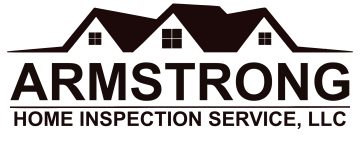Tie-Downs for Manufactured Homes

Tie-downs are systems of heavy-duty straps and anchors designed to stabilize manufactured homes (also known as mobile homes) during high winds. Failure to properly install and maintain tie-downs results in reduced capacity to resist sliding and overturning.
Two types of tie-downs include:
- over-the-top tie-downs, which are straps that are placed over the siding and roof. Some manufactured homes come equipped with concealed over-the-top tie-downs, which are located just under the exterior siding and metal roof. The end of the strap hangs out under the manufactured home. While this is an effective system, it detracts from the appearance of the home. Single-wide manufactured homes, as they are lightweight, generally require over-the-top tie-downs as well as frame anchors; and
- frame anchors. These straps attach to the home’s frame rails. Many newer manufactured homes, as they are structurally superior to older models, may be secured solely with frame anchors. Double-wide models are also generally heavy enough to resist winds without the aid of over-the-top tie-downs, although they, too, require frame anchors.
Tie-Down Components
- Ground anchors are metal rods driven into the ground to secure the tie-down tightly in place. A number of different types of ground anchors are available to suit various soil conditions. Auger anchors, for instance, have been designed for use in both hard soil and soft soil. Rock anchors or drive anchors allow the attachment to a rock or coral base. As only several inches of the anchors will be above the ground, inspectors will not be able to tell which type is used.
- Hook-up and tension devices work in conjunction with tie-downs. The tie-down must be connected to the anchor with a
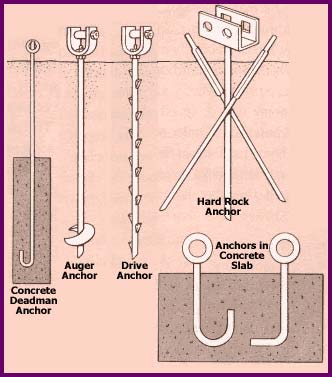 system that allows for the tension to be adjusted. This system must also be weather-resistant and strong enough to support as much weight as the anchor and tie-down. If the tie-down is fastened to a ground anchor with a drop-forged turnbuckle, it should be ½-inch or larger galvanized steel. The turnbuckle should have forged or welded eyes, and not hook ends, as the tie-down could slip from hook ends.
system that allows for the tension to be adjusted. This system must also be weather-resistant and strong enough to support as much weight as the anchor and tie-down. If the tie-down is fastened to a ground anchor with a drop-forged turnbuckle, it should be ½-inch or larger galvanized steel. The turnbuckle should have forged or welded eyes, and not hook ends, as the tie-down could slip from hook ends. - For exposed over-the-top tie-downs, there must be some sort of roof protectors placed under the strap at the edge of the roof. These prevent the tie-down strap from damaging the roof and will prevent the edge of the roof from cutting through the tie-down. Commercial protectors are available which distribute the pressure of the strap.
Safety and Maintenance Tips That InterNACHI inspectors Can Pass on to Their Clients
- Check for loose straps. Straps should be tight and straight. The manufacturer’s guidelines can be consulted for determining proper tension of the strap.
- Replace straps and anchors that show signs of corrosion or damage.
- A longitudinal tie-down system can be installed as an additional safety feature. This system uses straps that cross the length of the home, rather than its width.
- Turnbuckles, which are devices designed for adjusting the tension and length of straps and cables, should have welded eyes or forged eyes instead of hooks because hooks can slip.
- Find out the required number of straps for your area and make sure your home complies.
- Make sure straps and ground anchors are not damaged or corroded. If they are, they should be replaced immediately.
- Owners of manufactured homes should contact their local building department to find out how many tie-downs are necessary for such homes in their area. Regulations vary considerably by jurisdiction, and generally depend on the size of the home and the wind risk. In some states, such as Florida, tie-downs are stringently regulated and inspected.
- Straps should not be kinked or bent, or otherwise abnormally stressed.
- Straps must be protected at sharp edges with radius clips.
- Anchors must be installed to full depth.
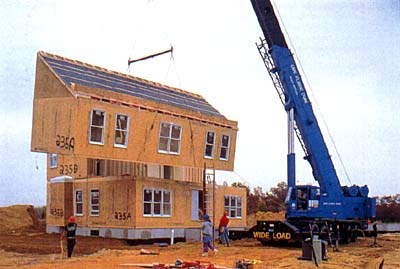
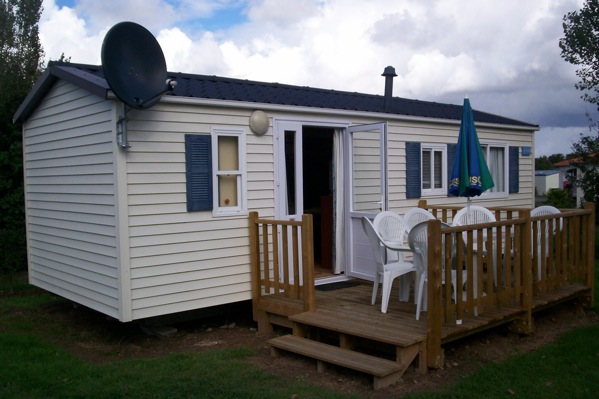
 Warranties and Other Protections for the Home Buyer
Warranties and Other Protections for the Home Buyer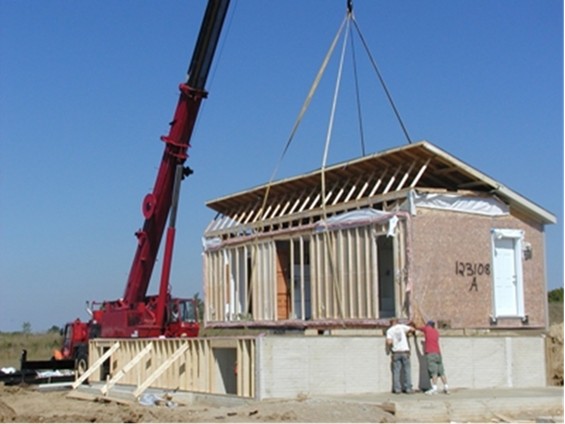


 A Word About the Interstate Land Sales Division
A Word About the Interstate Land Sales Division Water can even migrate through solid concrete walls via capillary action, which is a phenomenon whereby liquid spontaneously rises in a narrow space, such as a thin tube, or via porous materials. Wet basements can cause problems that include peeling paint, toxic mold contamination, building rot, foundation collapse, and termite damage. Even interior air quality can be affected if naturally occurring gasses released by the soil are being transmitted into the basement.
Water can even migrate through solid concrete walls via capillary action, which is a phenomenon whereby liquid spontaneously rises in a narrow space, such as a thin tube, or via porous materials. Wet basements can cause problems that include peeling paint, toxic mold contamination, building rot, foundation collapse, and termite damage. Even interior air quality can be affected if naturally occurring gasses released by the soil are being transmitted into the basement.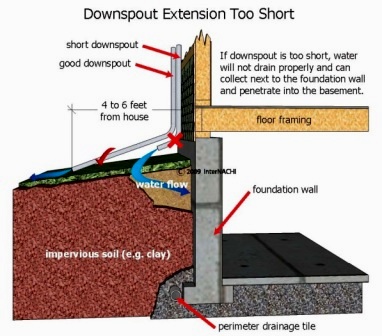
 A swale should slope away from the building for 10 to 15 feet, at which point it can empty into another swale that directs water around to the downhill-side of the building, leading it away from the foundation.
A swale should slope away from the building for 10 to 15 feet, at which point it can empty into another swale that directs water around to the downhill-side of the building, leading it away from the foundation. It should be pressed firmly into all parts of the larger cracks and holes to be sure that no air bubbles or pockets remain. As long as water is not being forced through basement walls due to outside pressure, the application of mortar with a standard trowel will be sufficient if special care is taken to fill all cracks completely.
It should be pressed firmly into all parts of the larger cracks and holes to be sure that no air bubbles or pockets remain. As long as water is not being forced through basement walls due to outside pressure, the application of mortar with a standard trowel will be sufficient if special care is taken to fill all cracks completely.




 sometimes convenient, but they’re no substitute. Manual screwdrivers can reach into more places and they are less likely to damage the screw.
sometimes convenient, but they’re no substitute. Manual screwdrivers can reach into more places and they are less likely to damage the screw.